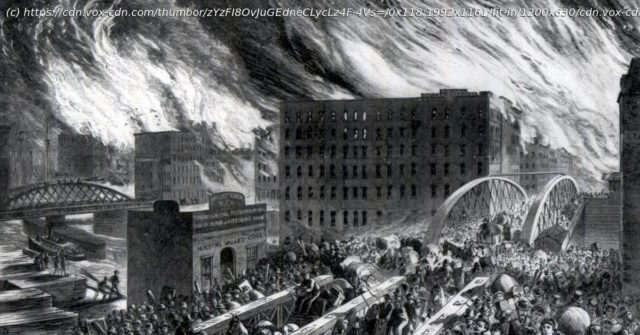The story of the fire, as popularly told, has lost its way at times in the assigning of credit and blame. This is no small matter for our own day.
The Great Fire of 1871 is Chicago’s creation myth, a heroic tale of the city’s rise from the ashes that civic boosters say best explains the past, present and — if we’ve still got the gumption, gosh darn it — future. The story is largely true and remarkable, no mythologizing required. One hundred and fifty years ago this weekend, on the night of Oct.8,1871, a fire in a barn on DeKoven Street really did swoop up in the wind and sweep across Chicago, leaping the river twice, for the next 36 hours. It really did gut the heart of our town, leveling some 18,000 buildings over 3 1 ⁄ 2 square miles. It really did bring death and sorrow, killing more than 300 people and leaving a third of the population homeless. And the fire really was followed — but here’s where the mythologizing also kicks in — by a grand and almost instant renewal, with Chicago in a handful of years becoming a stunningly more modern, beautiful and promising American city. For about 30 years after the fire, Chicago was the American city. Where the story of the Great Fire, as popularly told, has lost its way at times has been in the assigning of blame and credit, which is no small matter if we’re trying to understand the fire’s meaning for our own day. It is not by chance that Catherine O’Leary, a Irish immigrant woman of modest means, was blamed for starting the fire, though that falsehood was dispelled at an official inquiry held soon afterward. You can read the original transcripts, with their perfect penmanship, in the research library of the Chicago History Museum. In the years before the Great Fire, anti-immigrant sentiment was running hard among the “better classes” of Chicagoans who owned the city’s stores, ran the factories, ruled the stockyards and published the most influential newspapers.





